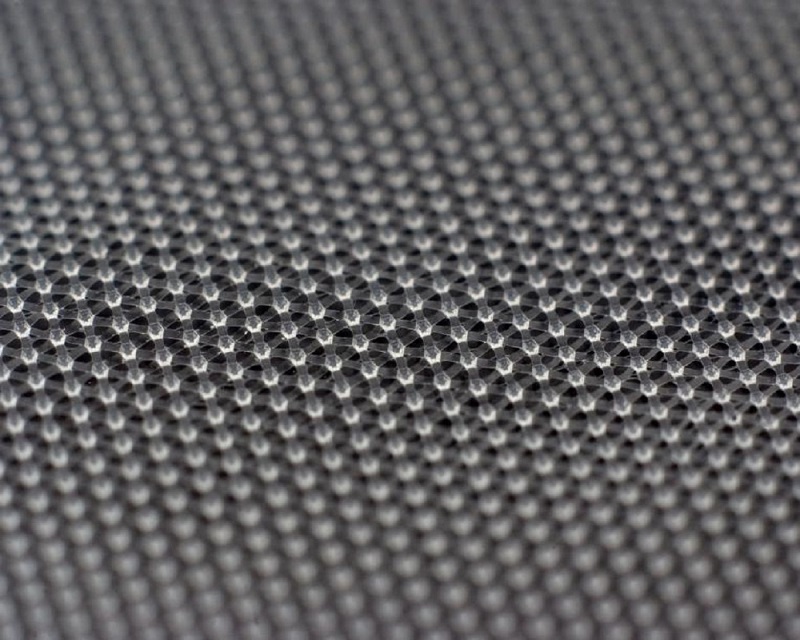

Welcome to Pinghu Zhanpeng Hot Melt Adhesive Web & Film Co., Ltd. Enterprise Official Website.

HDPE apertured film refers to a specialized High-Density Polyethylene (HDPE) film that has been engineered with a precise pattern of openings, or "apertures," within its structure. This combination of a robust base material and controlled porosity makes it a highly versatile material across numerous industries.
Understanding the Core Components
HDPE (High-Density Polyethylene):
Polymer Structure: HDPE is a thermoplastic polymer characterized by its highly linear molecular structure with minimal branching. This allows its polymer chains to pack together tightly, resulting in a high degree of crystallinity.
Key Properties:
High Strength-to-Density Ratio: It's lightweight yet incredibly strong and rigid.
Excellent Chemical Resistance: Highly resistant to many acids, bases, alcohols, and industrial chemicals, making it suitable for aggressive environments.
Moisture Barrier: Exhibits very low permeability to water vapor, offering good moisture protection.
Impact Resistance: Maintains its toughness even at low temperatures.
Durability and Longevity: Highly resistant to rot, insects, and other environmental factors.
Recyclability: Widely recycled (often identified by the "2" chasing arrows symbol).
FDA Compliance: Many grades are FDA-compliant for food contact applications.
Apertured Film:
Definition: This term describes a film that has undergone a process to create a deliberate and controlled pattern of holes, slots, or meshes. Unlike simple perforation, aperturing often involves stretching or forming the material around the openings to enhance specific properties or create a three-dimensional structure.
Purpose: The primary goal of aperturing is to introduce specific functionalities such as:
Controlled fluid or air flow
Breathability and ventilation
Textural feel (e.g., non-woven-like softness)
Enhanced surface area
Separation and filtration capabilities
Improved grip or anti-slip properties
Manufacturing Process: Creating the Apertures
While the initial HDPE film is produced via extrusion (blown film for high strength, cast film for clarity and consistency), the aperturing step involves specialized techniques:
Mechanical Perforation/Embossing:
Hot Pin Perforation: The most common method. A heated roller with precisely machined pins presses against the HDPE film. The heat melts the polymer, creating clean, defined holes with sealed edges, which prevents fraying and enhances tear resistance. The size, shape (e.g., circular, elliptical, hexagonal), and spacing of the pins dictate the final aperture pattern.
Cold Pin Perforation: Similar to hot pin but uses unheated pins. This method is less common for HDPE as it can lead to less defined holes and potential tearing.
Die Cutting/Punching: For larger, less complex patterns, or for thicker films, a die-cutting process might be employed.
Embossing & Stretching (Thermoforming/Mechanical Opening): Some apertured films are created by first embossing a pattern into the film, then mechanically stretching it. This stretching opens up the embossed areas, creating three-dimensional, often funnel-shaped apertures, which can enhance liquid wicking or a fabric-like feel. This is particularly common for hygiene topsheets.
Laser Perforation:
Precision: For extremely small, intricate, or highly precise hole patterns (e.g., micro-perforations), laser technology is used.
Advantages: Non-contact process, minimal heat-affected zone, high accuracy, and ability to create very fine holes not possible with mechanical methods.
Disadvantages: Typically slower and more expensive than mechanical methods.
The choice of manufacturing method depends heavily on the desired aperture characteristics (size, shape, density), film thickness, and end-application requirements.
Key Characteristics and Advantages
The synergy between HDPE's inherent properties and the engineered apertures results in a material with several desirable features:
Controlled Permeability: The apertures allow for precise control over the flow of air, liquids, or gases. This is paramount for applications requiring breathability or fluid management.
Excellent Barrier Properties (Residual Film): Despite the apertures, the HDPE base material between the openings still provides the inherent moisture and chemical resistance of HDPE.
High Strength and Tear Resistance: The strong molecular structure of HDPE, combined with the often-sealed edges of the apertures (especially with hot pin perforation), provides excellent tensile strength and resistance to tearing.
Softness and Texture (Customizable): By manipulating aperture size, shape, and 3D formation (e.g., funneled openings), the film can be engineered to feel soft and fabric-like, crucial for skin-contact applications.
Good Aesthetics: Can be produced in various colors, and the aperture pattern itself can contribute to the visual appeal.
Puncture Resistance: While having holes, the robust nature of HDPE often gives these films good resistance to punctures from soft, blunt objects.
Lightweight: Contributes to reduced material usage and shipping costs.
Cost-Effective: Often a more economical alternative to non-woven fabrics for certain applications, while still offering similar functionalities.
Customization: Aperture size, shape, density, basis weight (thickness), and even co-extruded layers can be tailored to specific performance criteria.
Diverse Applications
HDPE apertured films find extensive use across a broad spectrum of industries:
Hygiene Products:
Topsheets: Widely used as the topsheet in disposable diapers (baby and adult), feminine hygiene products (sanitary pads, pantyliners), and incontinence products. The apertured structure allows rapid liquid penetration to the absorbent core while providing a dry, soft feel against the skin. The funneled apertures often promote one-way fluid transfer, preventing rewet.
Acquisition/Distribution Layers (ADL): Can also be used below the topsheet to quickly acquire and distribute fluid across the absorbent core.
Medical & Healthcare:
Wound Dressings: Used as the non-adherent layer that contacts the wound, allowing exudate to pass through while preventing the dressing from sticking to the wound bed.
Surgical Drapes and Gowns: As components requiring breathability and fluid control.
Medical Device Components: Where precise fluid or air flow is needed.
Filtration and Separation:
Pleat Supports/Spacers: In air and liquid filters (e.g., HVAC filters, water filtration cartridges), the apertured film helps maintain the pleat spacing, ensuring optimal flow paths and filter efficiency.
Permeate Carriers: In membrane filtration systems, they can help carry the filtered fluid away from the membrane.
Separator Layers: In batteries or other electrochemical devices.
Packaging:
Vented Produce Bags: Allows fruits and vegetables to "breathe," extending shelf life by preventing moisture buildup.
Breathable Packaging: For food items that require air circulation.
Interleaving Sheets: To separate products and provide cushioning or breathability during transit.
Construction & Agriculture:
Geotextiles: In certain lighter-duty drainage or separation applications.
Agricultural Films: Such as specific types of mulch films or crop covers where controlled breathability is required.
Other Specialized Applications:
Coating Substrates: As a base layer for various coatings or laminations.
Release Liners: For adhesive products where a textured release surface is beneficial.
Automotive: For specific interior components requiring airflow or texture.
In essence, HDPE apertured film is a sophisticated material that leverages the inherent strengths of HDPE with advanced patterning techniques to deliver tailored performance for critical applications demanding controlled permeability, durability, and often a specific tactile feel.





